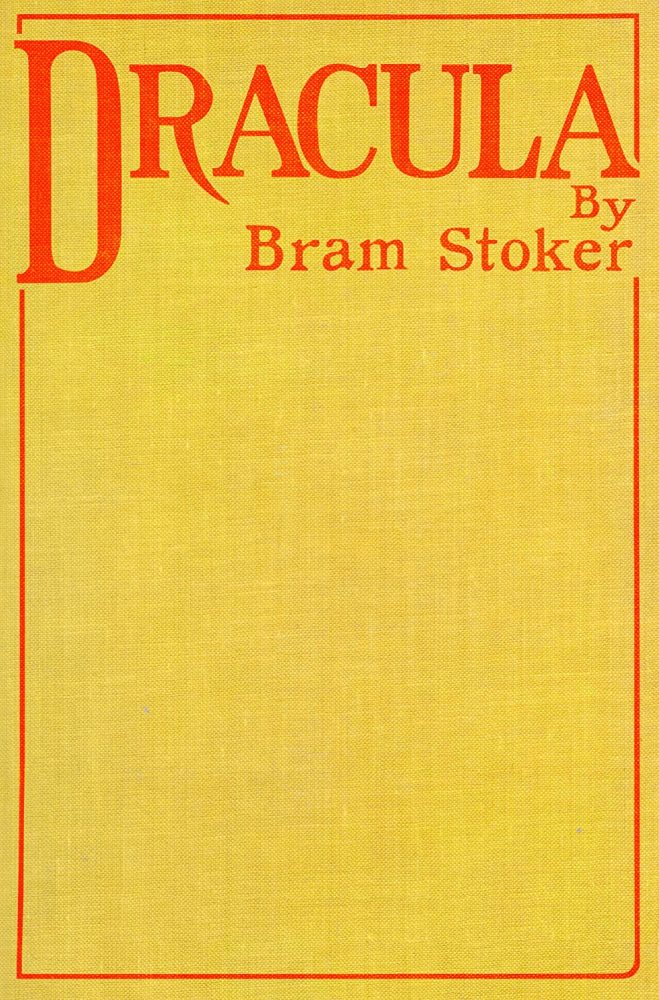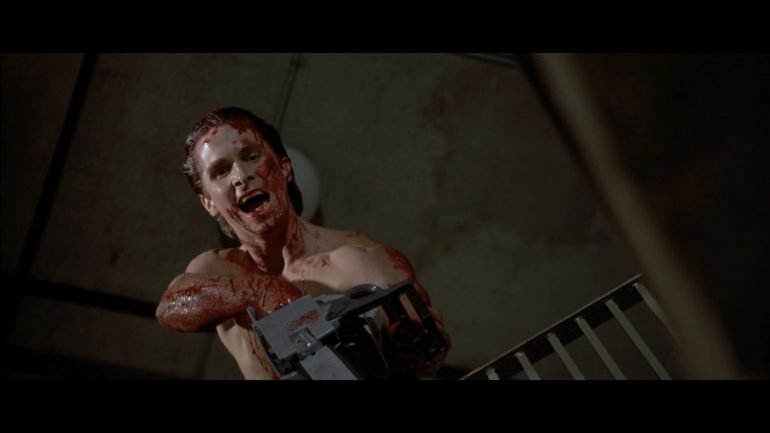Welcome to the dark closet of Halloween horror.
Whether it’s necessary subtext by a closeted director, a dire warning to young viewers by a Hollywood Code, or a subtle stab by writers at hetero-cis arrogance, the horror genre has long been a dark closet of queer themes, preying on heterosexual panic and feeding on contemporary perspectives of the “gay menace” to enforce, test or outright flout the boundaries of acceptable love.
This Halloween, dig into ten classic Horror stories, in print and on film, that hide their queer themes in plain sight. Sometimes infuriating, sometimes liberating, all these works rely on a queer-coded villain… some of them are seductive enough that you end up rooting for them.
1. Rebecca (1940)
It’s not impossible to read queer subtext into the titular (dead) character’s scandalous affairs, or Mrs. Danvers’ obsession with her beloved mistress. Daphne du Maurier was a notorious bisexual after all. But in the hands of Alfred Hitchcock, what was barely-there subtext in the novel became text on film — or at least as close to it as the Hays Code would allow.
On the silver screen, housekeeper Mrs. Danver’s Homosexual Predator meter jumps to 11 — and considering she’s the Big Bad in this story, it makes her obsession with Rebecca not maternal but deeply sexual.
In one particularly infamous scene, Mrs. Danvers catches the new wife snooping in Rebecca’s room. Instead of shooing her out or, you know, explaining why her husband hates women, she shows off Rebecca’s see-through lingerie, lovingly recalls helping her mistress undress, and rubs Rebecca’s fur coat dreamily across her cheek and lips.
But, you know, no homo.
2. Dracula (1897)

Vampires have been used as a metaphor for the gay community with mixed and sometimes disastrous results, but something a little more complicated (and a hell of a lot more coded) is happening in Bram Stoker’s classic.
The threat of Dracula is that he’s an invasive, possessive and predatory force for both women and men. Not only is he out to turn Mina and Lucy into the fourth and fifth members of his undead harem, he’s got his eye on Jonathan Harker too, and is righteously pissed when his vampire brides beat him to bloodsucking — something that’s not-so-subtly tied to oral sex.
On the other hand, we have the “I love you more than my husband” friendship of Lucy and Mina. Sure, female romantic attachments were assumed to be strictly platonic in Stoker’s day, but Bram implies that Lucy’s very special friendship with Mina is what actually keeps her pure and innocent, even with multiple suitors just dying to give their blood and make her an “undead bigamist” (trust me, you’ll get it when you read).
Be gay, ladies! It’s good for your marriage!
3. Strangers on a Train (1951)
Another Hitchcock thriller, this time about two strangers who meet on a train and agree to “exchange” murders so neither will get caught.
Guy — yes, literally Guy — is the most hetero man to hetero, only joking (so he thinks) about wanting to bump off his two-timing wife to get with the angelic Ann. But charming psychopath Bruno takes him up on it, and then demands Guy kill his old man… while trying to see if he can make his obsession with said hetero a little more blatant.
Bruno’s character in the Patricia Highsmith novel already has a fixation on Guy to rival the title character in The Talented Mr. Ripley (also a Highsmith work). In Hitchcock’s hands, however, Bruno recognizes Guy “from the social pages,” stealthily pockets the man’s monogrammed lighter, and spends half the movie staring intently at Guy’s profile.
“I’m your friend. I like you. I’d do anything for you.” That’s the film’s real moral: if you joke about killing someone on a train, that gay guy next to you might actually do it.
4. American Psycho (2000)
Directed by Mary Harron with lesbian icon Guinevere Turner, American Psycho is about homosexuality not as a predatory menace but as a constant background to and contrast against the hyper-masculinity and gay panic of possible serial killer, definite asshole Patrick Bateman.
Patrick’s obsession with perfect skin, workout routines and the fashion of well-tailored suits and eggshell-accented business cards — easily applicable to the stereotypical gay “diva” — have lead some to speculate that his brutal, misogynistic fantasies are manifestations of his own repressed desires.
But while there’s definitely more than one way to interpret axing Jared Leto in the face, what comes through strongest in the movie is not Patrick’s possible homosexuality but how his hatred of women and gay men is contrasted with his obsession over the very thing he mocks these groups for desiring: status.
Nowhere is the plight of Reagan’s Metrosexual Spawn more skeweringly delivered than when a co-worker avoids being murdered by assuming Patrick is coming on to him. Nothing scares a psychopathic man-child like the threat of gay sex: an important lesson for us all.
5. Dracula’s Daughter (1936)
Holy lesbian predator, Batman!
Countess Marya Zaleska is supposed to be Dracula’s sire, desperate to rid herself of her thirst for blood, kidnapping a nice doctor to join her in the undead if all else fails.
What actually plays out is a movie about a woman who lures girls to her castle to be “painted,” gets them to strip, and then hypnotizes them with her jeweled ring, commenting creepily on their ethereal beauty before preparing to feed. Even when she’s supposed to be blackmailing Dr. Jeffrey Garth into becoming a vampire, she does it by kidnapping and running away with his girlfriend Janet.
It’s Marya’s Sapphic tendencies, in fact, far more than vampirism, that pose the true threat in the film. Marya is allowed to hold a cross, grieve her dead father and even play a melancholy piano tune without being divorced from her essential, poignant humanity — it’s only when she’s preying on young women that she’s painted as a monster.
6. Rope (1948)
“You’re quite a good chicken strangler, as I recall.” Seriously, Hitchcock? Seriously.
This Leopold and Loeb-inspired film is about two men who strangle a friend and then make O faces while remembering his choked breath, limp body and draining life force — paired with an opening scene showing the victim with his eyes closed, mouth open, and head tilted back in what could easily be ecstasy.
The entire movie centers around two aesthetes struggling with a devastating social secret, and both the main actors and the screenwriter were gay. Yet somehow, contemporary audiences viewed the film as nothing more than a take on murder at prep schools… leaving us to shake our heads and sigh.
7. The Nightmare on Elm Street Series (1984-2010)
The first movie only hints at Freddy’s man-flesh tendencies. A suggestive grab at Johnny Depp here, an effeminate motion by Freddy there, a sledgehammer-subtle metaphor about teen’s dark dreams having sexual undertones… it’s all the good queer-coded villain standards.
But A Nightmare on Elm Street 2: Freddy’s Revenge pulled out all the stops. For a movie whose director claims any homosexual subtext is coming from the viewers, this film of a repressed lead character’s adventures in a leather bar, strip-wrestling with his friends and losing his shirt while battling a villain who wants to literally enter his body is pretty explicit.
There’s a reason it’s known in cult circles as “the gayest horror blockbuster ever.”
8. The Shining (1980)
Any one interpretation of The Shining is going to get us a lot of angry letters. You can’t deny, though, that Stanley Kubrick’s adaptation of King’s classic is rife with references to homosexuality.
King’s novel is peppered with homophobic slurs, from the “old timey” character who runs the boiler to Jack’s “f—t” fueled rant against Mr. Ullman. The Overlook’s memory vault even includes a gay man whose lover might have sex with him again if he dons a dog mask and acts like a puppy. This gives new meaning to the cry “Unmask! Unmask!” that reoccurs throughout Jack’s fevered meltdown, weaving homosexuality into the repressed desires that manifest most of the hotel’s most dangerous apparitions.
Kubrick however, while cutting the context for a later blowjob scene, makes up for it by filling the movie with oblique references to gay and pedophiliac themes, from Jack reading a Playgirl magazine to hints that the boy living in Danny’s mouth is the suppressed memory of his molestation.
Is that enough to hold water? Well, look, this is OutWrite. Don’t expect a straight answer from us.
9. Poison Ivy (1992)
This cult hit presents itself as a straight-forward femme fatale cautionary tale. Don’t befriend that sexually mature girl, Sylvie; she’ll abuse your trust, kill your mother and seduce your father so she can be rich and secure.
There’s just one problem: Ivy’s interest in hot dad Darrel only extends as far as it gets her close to Sylvie.
Think about it: Ivy gets Sylvie to become friends with her, kills her mother (the only person Sylvie is really close to), and repeatedly tells her she loves her and makes her feel like she has a family. There’s even a scene where Sylvie kisses Ivy because she’s hallucinating that it’s her mom, and Ivy goes in for the tongue. Even for a predatory pansexual, that’s twisted.
But it’s not just Ivy who’s feeling the love. Sylvie openly admits that she’s captivated by her new friend, lying to her so she’ll like her and unwilling to see the clear signs that Ivy’s bad news. She even ends the film, having lost both mom and crush, by saying she still loves and misses “her”… leaving it up to audience to decide which “her” that is.
10. Carmilla (1871)

…C’mon, you didn’t realize this?
Go join the thousands of readers who breezed right by Joseph Sheridan Le Fanu’s Sapphic subtext in the 1870s… then read one of the most blatant vampire = lesbian analogies ever penned.


Thanks for a well-written article. I always knew about these films, stories and novels, but I was surprised that you didn’t include a full description of The Talented Mr. Ripley. Tom Ripley is not only homosexual, but he kills the one really loving guy Peter to protect himself from being discovered. I cried when Peter died.